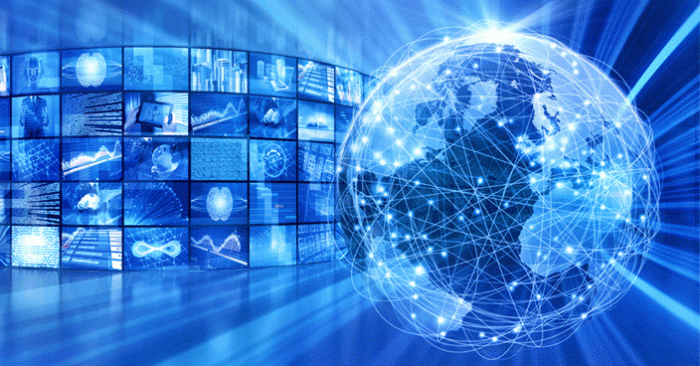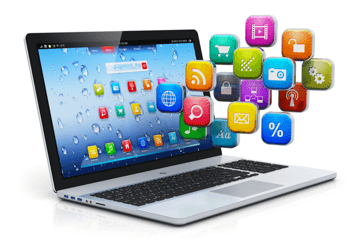Rules of Netiquette & Trends in ICT
Rules
of Netiquette

The internet
SOFTWARE
Computer software Is a part of computer system that consists of data or computer instructions, in contrast to the physical hardware from which the system is built.

Internet/web threats
CYBERCRIME

MALWARE
Malware short for malicious malware, is an umbrella term use to refer to a variety forms of hostile or intrusive software.

Computer Virus
 Trojan
horse, or Trojan, is any malicious computer program which misleads users of its
true intent. The term is derived from the Ancient Greed story of the deceptive
wooden horse that led to the fall of the city of Troy.
Trojan
horse, or Trojan, is any malicious computer program which misleads users of its
true intent. The term is derived from the Ancient Greed story of the deceptive
wooden horse that led to the fall of the city of Troy.

Phishing these
are sites that allow you to store and manage links to various website and
resources. Most of this sites allow you to create a tag that allow you and
other to easily search and share Item.
these
are sites that allow you to store and manage links to various website and
resources. Most of this sites allow you to create a tag that allow you and
other to easily search and share Item. These
are sites that allow you to upload and share media content like images, music.
And video. Most of these sites have additional social like liking, commenting
and Having user profiles
These
are sites that allow you to upload and share media content like images, music.
And video. Most of these sites have additional social like liking, commenting
and Having user profiles

The internet
The internet, sometimes called simply
‘the Net’ is a worldwide system of computer networks –a network of networks in
which users at any one computer can, if they have permission get from any other
computer (and sometimes directly to users at other computers)
Operating
system (OS)
An operating system or (OS) is the
program that, after being initially loaded into the computer by a boot
program manages at the other program of the computer.
Operating
system (OS)
The other programs are called
applications or application programs. The application programs make use of the
operating system by making request for services through a defined application
program interface
(API). In addition, through a user interface such as a command line or a graphical user interface (GUI).
(API). In addition, through a user interface such as a command line or a graphical user interface (GUI).
SOFTWARE

Computer software Is a part of computer system that consists of data or computer instructions, in contrast to the physical hardware from which the system is built.
Computer software includes computer
program, libraries and related non-executable data such as online documentation
or digital media. Computer hardware and software required each other and
neither can be realistically used on its own.
Internet/web threats
Web
threats pose a broad range of risks, including financial damage, identity
theft, loss of confidential information/data, theft of network resources,
damaged brand/personal reputation and erosion of consumer confidence in e-commerce and online banking.

CYBERCRIME
MALWARE
Malware short for malicious malware, is an umbrella term use to refer to a variety forms of hostile or intrusive software.
Kinds of malware
1. Virus
2. Worm
3. Trojan
4. Spyware
5. Adware
1. Virus
2. Worm
3. Trojan
4. Spyware
5. Adware

Computer Virus
A
computer virus is a type of malicious software program(malware) that, when
executed, replicates itself by modifying other computer and inserting its own code. Infected computers programs
can include as well data files or the ‘boot’ sector of the hard drive.
I
love you virus.
Viruses
can be spread through:
Email
Social
networks
Text
messages
Internet
downloads
Computer
worm
A
computer worm is a standalone malware computer program that replicates itself
in order to spread to other computers. Often, it uses a computer network to
spread itself, relying on security failures on the target computer to access
it. Worms almost always cause at least some harm to the network, even if only
by consuming bandwidth, whereas viruses almost always corrupt or modify files
on a targeted computer.
Many
worms that have been created are designed only to spread and do not attempt to
change the systems they pass through. However, as the Morris worm and Mydoom
showed, even these ‘payload-free’ worms can cause major disruption by
increasing network traffic and other unintended effects.
Computer
Trojan
Spyware
is a type of malware that is installed on a computer without the knowledge of
the owner in order to collect the owner’s private information. Spyware is often
hidden from the user in order to gather information about internet interaction,
keystrokes (also known as keylogging), passwords, and other valuable data.
Adware
The
term adware is frequently used to describe a form of malware (malicious
software) which presents unwanted advertisements to the user of a computer
SPAM
Electronic
spamming is the use of electronic messaging systems to send an unsolicited
message (spam) especially advertising, as well as sending messages repeatedly
on the same site.
It
is named after the Spam, a luncheon meat, by way of a Monty Python sketch about
a restaurant that has spam in every dish and where patrons annoyingly shout
spam over and over again. Junk email

Phishing
Is
the attempt to obtain sensitive information such as usernames, passwords, and
credit card details (and money0, often for malicious reasons, buy disguising as
a trustworthy entity in a electronic communication.
The
word is a neologism created as a homophone of fishing due to the similarity of
using a bait in an attempt to catch a victim.


TRENDS IN ICT
Convergence
Convergence
-
is the synergy of the
technological advancements to work on a similar goal or task.
Social media
Is
a website, application or online channels that enables web users to create, co-
create, discuss, modify and exchange users-generated content.
These
are site that allow you to connect with other people with the same interest or
background
Example:
Facebook or Friendster
Bookmarking site
 these
are sites that allow you to store and manage links to various website and
resources. Most of this sites allow you to create a tag that allow you and
other to easily search and share Item.
these
are sites that allow you to store and manage links to various website and
resources. Most of this sites allow you to create a tag that allow you and
other to easily search and share Item.
Example:
stumble upon and Pinterest
These
are sites that allows users to post their own news items or links to other news
sources. The users can also comment on the post and comments may also be rated
Example: Rappler
Media sharing
Example:
Instagram
These
are site that focus on short updates from the users. These subscribed to the
user will be able to receive these updates
Example:
Twitter and Plunk
These
websites allows the user to post their contents. Other user able to comment on
the said topic.
Examples:
Blogger and WordPress
iOS
- for iPhone
Black
berry OS - for blackberry
Android
OS - for android phones
Symbian
OS - for Nokia
Web
OS - these OS is usually use for TV Like LG
Windows
Mobile - the operating system for smartphone and windows Phone
These
media are helping people with visual and reading impairments





plutotv.com
ReplyDeleteEvery line here feels like a golden nugget of wisdom
if you have free time visit our website plutotv
This websites allow the user to post their content. Other user able to comment easily
ReplyDeleteplutotv
Great step-by-step guide for foxnews.com/connect, loved it foxnews.com/connect
ReplyDeleteThis was a well-written and informative piece. I appreciate the effort you put into researching and presenting the facts if you have free time visit our website foxnews.com connect
ReplyDeletefoxnews.com/connect just got less confusing after reading this. foxnews.com/connect
ReplyDeleteNow I can connect smoothly on any device. foxnews.com/connect
ReplyDeleteThis article is a lifesaver for new users like me. foxnews.com/connect
ReplyDeleteI’ve been following your blog for a while, and your consistency in delivering useful content is commendable. Thanks for sharing this! mcdvoicecsurvey
ReplyDeleteGreat insights — I used netflix.com login on my tablet while reading your review. netflix.com login
ReplyDeletenice blog and so interesting
ReplyDeletehttps://foxnewssconnect.com/
Very useful article! The content is rich and actionable. tellculvers I particularly like how you explained the nuances—it’s rare to see such clarity.
ReplyDeleteActivate Netflix easily through netlfix.com/tv2 and start binge-watching top-rated shows instantly. netflix.com login
ReplyDeleteI learned a lot from this article. cvshealthsurvey You presented the ideas in a clear and organized way, making it easy to follow.
ReplyDeleteExcellent post! You’ve really done great research on this topic. The way you’ve simplified the complex points is impressive. This was a very engaging and educational read. Keep up the amazing work! if you have free time visit our website netflixcomtv2
ReplyDeleteI really enjoyed this post! You can earn rewards via lowes.com survey .
ReplyDeleteThat’s certainly an interesting read! If you love free entertainment and streaming, you should definitely check out pluto tv activate to start watching instantly.
ReplyDeleteThis is a very detailed and informative post. I liked how you explained each point with clarity and relevance. It’s definitely something I’ll recommend to others who are interested in this topic. if you have free time visit our website tracfone activate
ReplyDeleteAppreciate the tips — I found cvshealthsurvey extremely helpful.
ReplyDeleteEvery foodie should try the TellCulvers survey — it’s a win-win! 🍨 tellculvers survey
ReplyDeletehello I have get a lot of useful information in your website nice blog and good information
ReplyDeletehttp://tracfonecomactivate.com/
Thanks for sharing such helpful content! Culver’s survey is one of my favorites. The process is smooth, and you get delicious rewards after completion. 😋 tellculvers survey
ReplyDeleteThis comment has been removed by the author.
ReplyDeleteThanks for sharing! I love visiting kansas lottery winning number after every draw. Easy to use and shows real-time results perfectly.
ReplyDelete